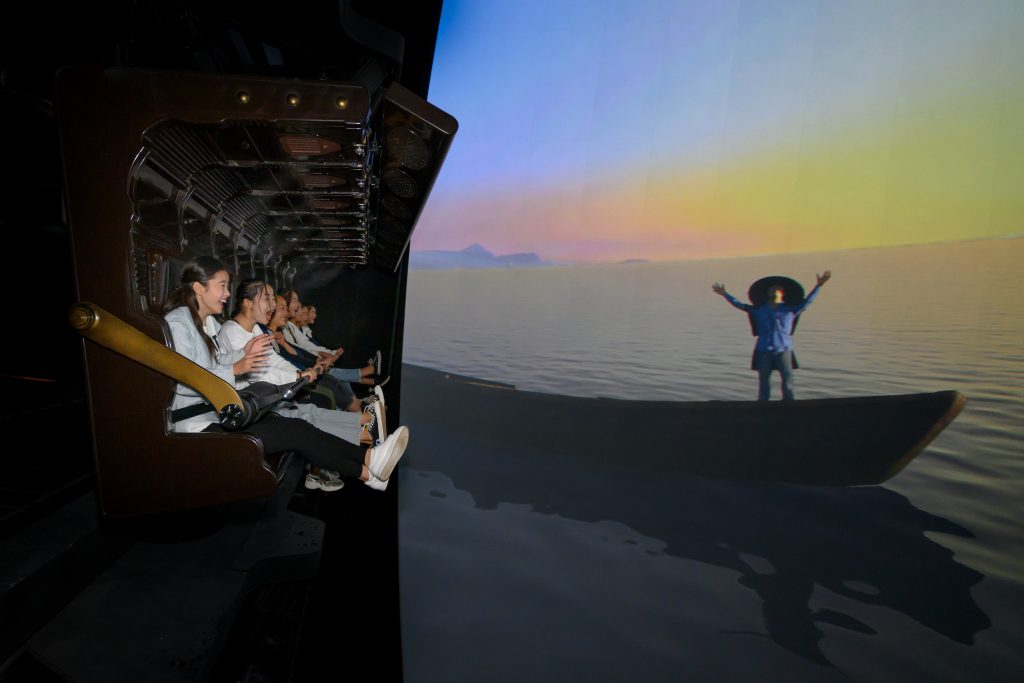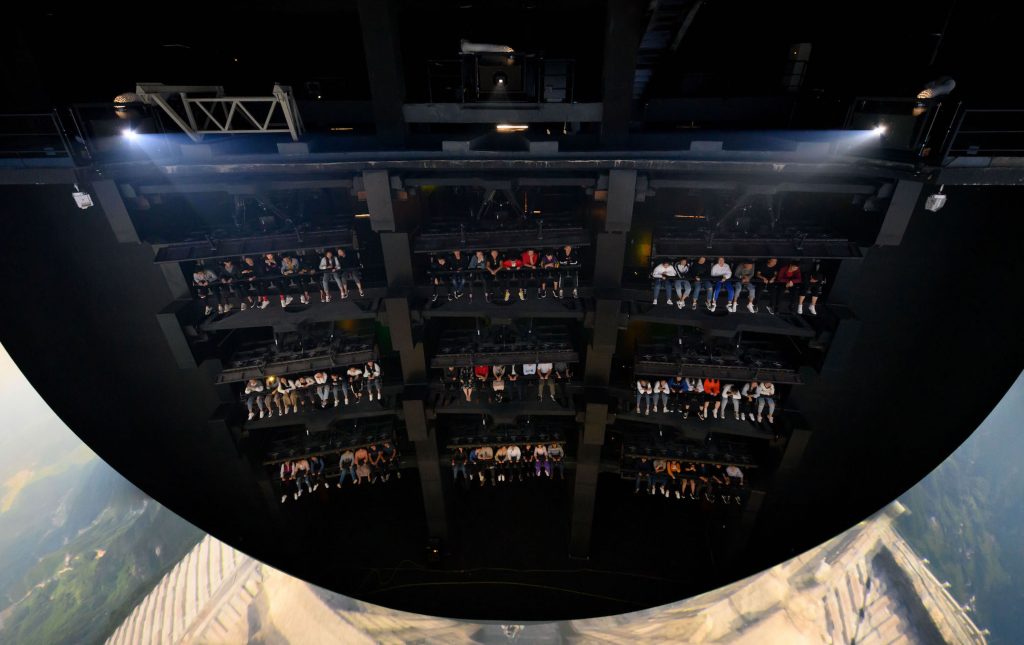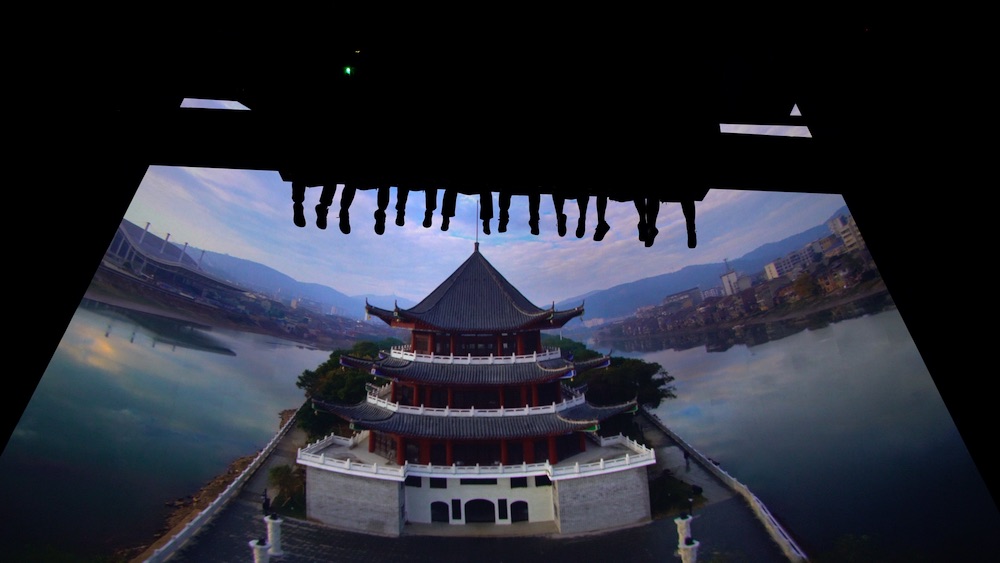The sky is the limit

Flying Theatres have come a long way in recent years with improved content and new motion-based technologies working together to create unforgettable experiences for guests the world over. A form of entertainment that appeals to adrenalin junkies and families alike, parks of all sizes are now capitalising on the trend. Park World reports.
“Certainly flying theatres have evolved over time since the debut of the very first flying theatre in California Adventure 17 years ago,” says Brogent’s Stefan Rothaug. “The biggest difference is the advancement of the ride system. For example, our i-Ride uses a full 6DOF motion base to support not only heave and pitch movements, but also surge, sway, yaw and especially roll. We can now create all kinds of movements.” SimEx-Iwerks’ Entertainment’s Mike Frueh agrees: “Flying Theatres have evolved and improved enormously in terms of design; the motion equipment, motion quality; projection technology; special effects; film quality; and value engineering.”
As popular as the Flying Theatre concept has always been, it’s only in recent years that take-up has been more widespread. Simworx CEO Terry Monkton explains: “We’ve helped to make this innovative product much more accessible by developing two different Flying Theatre systems to accommodate different sized parks and operators.
“Our 360 degree Flying Theatre (in collaboration with Mondial) consists of a whopping 60 seats while our Mini Flying Theatre, which has been developed as a smaller option, can seat 20. The Mini Flying Theatre brings this popular type of attraction into the reach of smaller operators with a more accessible price range and smaller overall footprint but still retaining that cutting-edge ride technology.”
Triotech agrees that size has, at least in the past, been a problem: “The first generation of flying theatres were major investments that required a huge space and were therefore reserved for large destination parks. Recently, more agile technical solutions have made the flying theatre available to much smaller operators bringing a “theme park experience” to tourist destinations around the world.”

And while guests to theme parks and other attractions might always be on the look out for the ‘next big thing’, this is one type of experience that is here to stay says, CAVU Designwerks CEO Peter R. Schnabel: “The appeal of Flying Theatres withstands the test of time,” he says: “They are perhaps our industry’s most quintessential attractions. This ride system captivates, enthrals, and entertains people of all ages and from all cultures.”
So, what do people really want from a Flying Theatre nowadays? Simworx CEO Terry Monkton, explains, “they want it to be unique and tailored to their areas, so guests can really feel what it’s like to fly over the local sights and landmarks. We work with film crews to record aerial footage of pretty much any area to ensure the experience is as dynamic and exhilarating as possible.”
Picking back up on the trend for more compact ride systems, Stefan Rothaug is keen to talk about Brogent’s latest offering the m-Ride, “a more compact system that fits the needs of regional parks and offers the unique flying theatre experience that provides the two key factors, suspended seating and a giant dome screen, to a new market segment.”
And while SimEx-Iwerks’ Mike Frueh agrees that progress has been rapid, there are always improvements to be made: “The current emphasis is on providing a variety of film licensing options; improved image quality; a more experiential in-seat experience; and reduced per-seat costs which make flying theatres a stand-alone financially sensible option.
Mike adds that “one of the biggest challenges for operators has been the cost, and associated risks, of producing custom flying films. We’ve solved that issue. SimEx-Iwerks and MacGillivray Freeman Films are creating a catalogue of flying films that will be available to rent. Our first films will be released in early 2019,” he says.
A new generation of attractions
“Flying theatre’s are part of the second golden age of simulators (after the late 80s early 90s) that was made possible by the shift from hydraulic to electric actuators.” Says Brogent’s Stefan Rothaug. “Now a new generation of media-based, motion based attractions has arrived. Apart from this technology shift, we have seen huge improvements in content production and projection technology – just recently with the shift from traditional lamp projectors to cutting edge high brightness/high contract projection with laser light source and an increase in resolution, allowing for even sharper pictures.”
Picking up on this theme, CAVU Designwerks Peter R. Schnabel continues: “as technology advances, increases in media resolution, better contrast and brightness, and a much wider, richer palette of colours creates an even more immersive and powerful storytelling machine.”
Manufacturers across the board are working hard to improve the ride experience, with a number of new technologies emerging. SimEx-Iwerks Mike Frueh says this is demonstrated in a variety of seating positions now available (classic seat; ride forward, etc.); “different screen designs; added special effects;” amazing new projection options and greatly improved “fly film” production.”
Simworx is always looking at ways to innovate and improve its existing products. “The audio/visual aspect of all our rides is continually evolving, and fortunately we have a team of expert developers making sure we stay bang on trend,” says CEO Terry Monkton.
Andreas Stickel, director, business development, Simtec Systems says: “Clients recognize more and more that a flying theatre needs to be based on a six degree of freedom motion system to be able to simulate the real feeling of flying. Large cylinders are of advantage to realize smooth soaring as well as dynamic motion movements.
“We can see that clients are requesting a turn-key solution, which means ride system, screen, AV and movie out of one hand, instead of shopping individually.”
A stand-alone attraction
Due to the fact that flying theatres have been very successful in theme parks, operators have also realized the potential to establish flying theatres as stand-alone attractions. Simtec System’s Andreas Stickle says it is to be flexible in the operation and, due to available sizes of facilities, especially height of buildings, it is important to be able to deliver a compact motion system. Simtec has therefore enhanced its product range of flying theatres and developed a 20-seater, which is compact on one side, but still provides smooth soaring and dynamic motion movements.
Indeed, Simtec has been very successful with its HEXaFLITE flying theatre concept, based on a 6 degree of freedom motion system. To be more flexible in regard to the number of seats and to be able to offer solutions for small to medium spaces it has upgraded the smallest version of its HEXaFLITE systems, the HEXaFLITE 16, to a HEXaFLITE 24. Andreas continues: “In our flying theatres we integrate people into the story, but this only works by delivering components with top quality – the ride system, AV system, projection, screen and media. The movement of our systems supports the media content to create the perfect illusion.”
Simtec is in the process of supplying the HEXaFLITE 40 system to a client in Rome and four HEXaFLITE 72 systems in Wuxi and Guangzhou, two in each location. Operation of the system in Rome will start around Easter and the start of the systems in China is planned for mid of 2019.
Running parallel to this the installation of a HEXaFLITE 72 system in Kunming, which will be followed by another two installations of HEXaFLITE 72 systems on the Hainan island by the end of this year.
Article first appeared in Park World.

